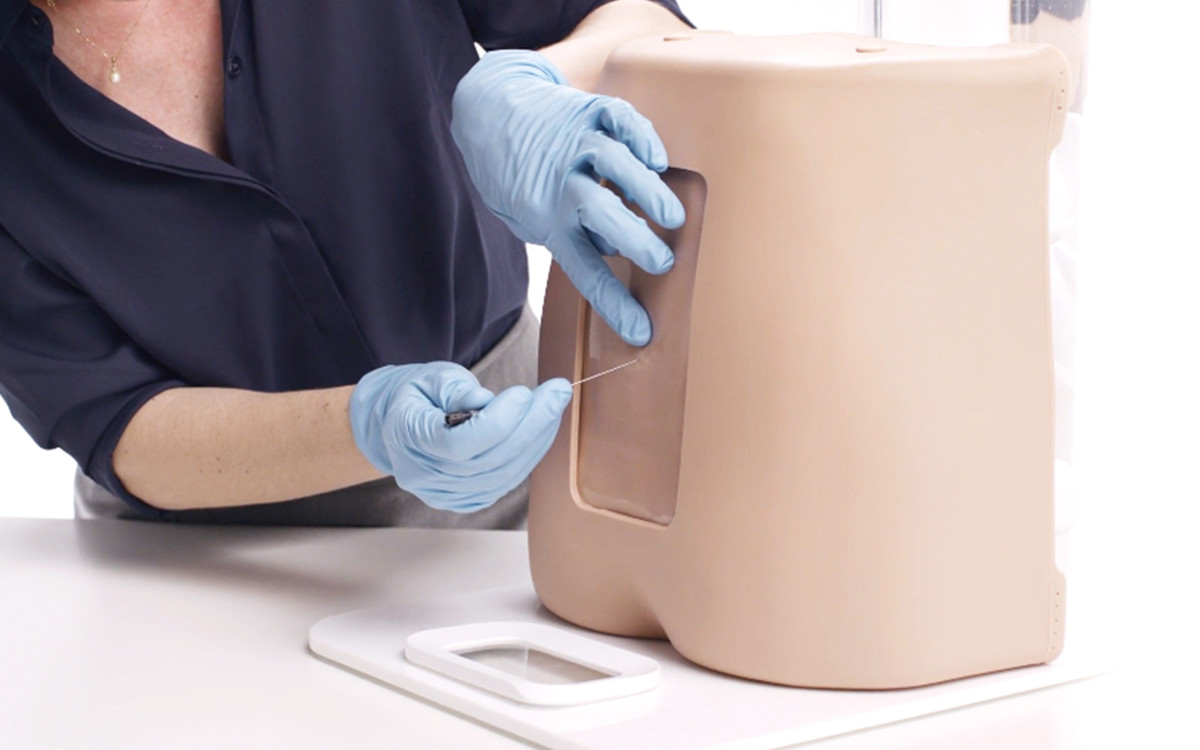Performing Lumbar Puncture Safely
Procedures that involve needles in the spinal area often cause apprehension in patients and novice providers who must perform the procedure. It would be highly reassuring to know that the person performing the task has done it many times and is confident in their skills.

Procedures that involve needles in the spinal area often cause apprehension in not only patients, but also a novice provider who must perform the procedure. As a patient, it would be highly reassuring to know that the person performing the task has done it many times and is confident in their skills. As the provider, having the ability to practice the procedure on a model in a controlled environment many times before completion on a patient builds not only competence, but also confidence in their ability to perform the procedure safely and without error.
Lumbar puncture (LP), first performed in 1891, is a procedure that is learned in undergraduate medical school and practiced frequently by providers in family medicine, internal medicine, neurology, emergency medicine, anesthesia, and radiology specialties, as well as mid-level providers such as physician assistants.
A Lumbar Puncture procedure may be ordered for patients of all ages, mostly “for diagnostic sampling of the cerebrospinal fluid (CSF) to evaluate for suspected infections of the central nervous system, hemorrhage, neoplasm, or inflammatory disorders”.1 The CSF samples are taken from the subarachnoid space (also called the intrathecal space) of the spinal column. Another reason a lumbar puncture might be performed is to inject medications into the intrathecal space for short term pain relief, certain kinds of chemotherapy, or other therapeutic treatments.
Although medical students have a “high motivation to learn”2, a study published in December of 2020 states that “>60% of students report poor comfort levels for most skills”.2 The comfort level the students seek is often found in the simulation center where they can master a skill through repeated deliberate practice; And what is most encouraging for both students and patients is that new research focused on LP training for medical students shows that their “theoretical knowledge and confidence level showed significant improvement after simulation training” and that the “success rate of the first LP in patients was higher in the LP simulation group compared to the control group”.3
While an anesthesiologist uses both the subarachnoid space and the epidural space, other healthcare providers only use the intrathecal space when perform a lumbar puncture procedure. Although very close anatomically, the subarachnoid (or intrathecal space) is not the same as the epidural space. This diagram shows the anatomical locations of each:

The most common complication that is noted in the literature is a post-lumbar puncture headache, which can occur in >30% of patients. Those most at risk for the headache are females, patients with lower body mass index (BMI), or those that have a history of headaches. The most common way to prevent the complication is to use an atraumatic, noncutting needle for the procedure, while the often used techniques of increasing caffeine consumption or bedrest after the procedure do not seem to be as helpful as once thought.6
Within the last decade, the use of bedside ultrasound has been used “to identify an ideal location for needle entry which may prevent repeated attempts and reduce procedural complications.”5 In a recent position statement issued by the Society of Hospital Medicine recommending the use of ultrasound for lumbar puncture, two important facts stood out to me:
- If ultrasound is available, it should be used to guide the LP procedure
- Novice providers should participate in simulation training before performing a LP on a patient.7
The Limbs & Things Lumbar puncture model is designed for the novice learner. It features replaceable tissue inserts, durable spine and anatomy that accurately recreate the feel of puncturing the dura and the collection and measurement of CSF. Its separate spine and replaceable tissue mean the model is a cost-effective way to train large numbers of students.
References:
1 Techniques of lumbar puncture and intrathecal and epidural injections
3 Positive effects of lumbar puncture simulation training for medical students in clinical practice
4 Lumbar Puncture Procedure Module
5 Point-of-Care Ultrasound: Guidance for Lumbar Puncture
Did you like this article?
Share it on social media and remember to tag us!

